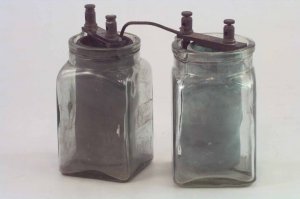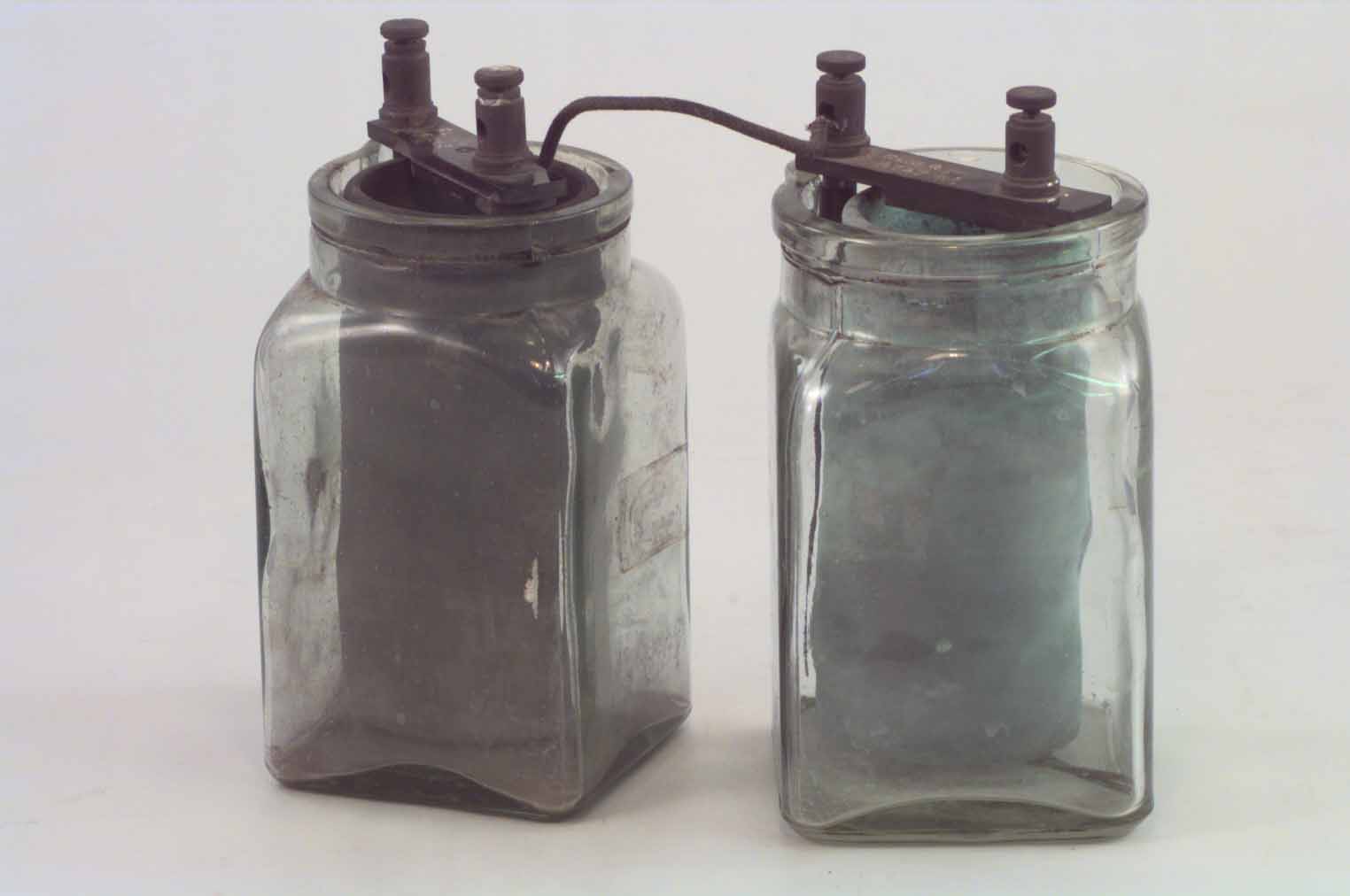
Two Glass square-section vessels with a circular openings on top. Base of vessels 9.5*9.5, height 16, total height 20. F2/4 embossed in base of one. Ceramic pots 7cm diameters.
Invented by French scientist Georges Leclanche (1839-1882) in 1866, this battery in its usual form uses a central carbon electrode surrounded by manganese dioxide in a porous (old form) or agglomerate carbon blocks (new form), with zinc rod for the positive terminal placed in a solution of ammonium chloride (sal ammoniac) in a glass bottle outside the central electrode. To maintain the efficiency of the cell it should be placed in a cool dry situation, a little water added occasionally to compensate for the evaporation of the liquid and at intervals, a little sal ammoniac. With a little rest, any accumulation of hydrogen becomes oxidised and the cell recovers its power.
The e.m.f. of a Leclanche cell is about 1.5 volts buts its resistance may amount to several ohms when a porous pot is employed. It was used extensively for telegraphy, signalling and electric bell work; and for most work where intermittent current is required and where it is essential that the battery should require very little attention from time to time.
SV






